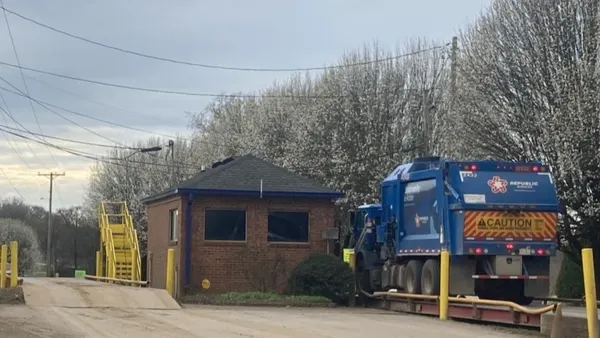Dive Brief:
- A new study from the Department of Energy's Lawrence Berkeley National Laboratory published in the journal "Geophysical Research Letters" found — with 95% confidence — that methane emissions in the San Francisco Bay Area are 1.8 times higher than the regional Bay Area Air Quality Management District (BAAQMD) previously thought.
- Biological sources were responsible for about 82% of these emissions and landfills were seen as one of the most likely sources within this category. Fossil fuel sources contributed the remaining 17% of emissions.
- The San Francisco Bay Area was chosen for the study because its nine counties account for 10% of California's methane emissions, despite having minimal petroleum production or livestock. The researchers collaborated with multiple academic and regulatory organizations to assess air sample results taken from six towers in the area.
Dive Insight:
Methane reduction is of particular interest for California because the state has set aggressive emissions reduction targets. The state is trying to reduce greenhouse gas emissions to 1990 levels by 2020 and an additional 80% below these levels by 2050. Governor Jerry Brown also signed a law last year requiring a 40% reduction in methane levels — based on 2013 data — by 2030.
One of the Berkeley study's co-authors estimated that methane accounts for up to 15% of California's greenhouse gas emissions and because the gas is known to trap more heat than carbon dioxide, this makes reduction a top priority. Organic waste diversion programs are increasingly popular in California municipalities to help meet these goals and limit the usage of some regional landfills that are running out of capacity. Though it has been hard for some landfill operators to work within all of the state's emissions reduction requirements and some have switched back to flaring gas for the time being.
According to the Environmental Protection Agency's most recent data, the amount of carbon dioxide equivalent gases — including methane — from the waste industry have been slowly decreasing. Though landfills still account for the vast majority of these emissions, which is why the agency has worked to implement new landfill performance standards and encourage food waste diversion. Finding new ways to continue these programs, and capture more methane for energy at these sites, will be a big priority for California's waste industry for years to come.









